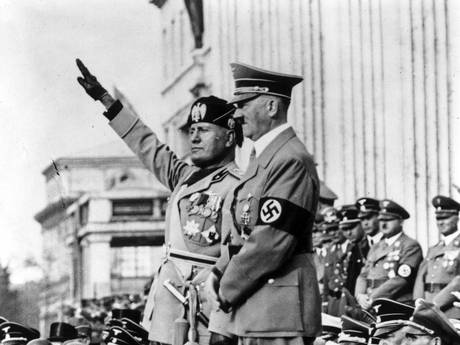
Uncertainty dogs Swiss science in EU immigration row
April 26, 2014
Carnival steers a new course
April 26, 2014The northern Italian town, known for neo-fascist pilgrimages, already maintains the home in which Mussolini was born in 1883, as well as the mausoleum where he is buried. The museum will be located in the now-abandoned Casa del Fascio, which was built in the 1930s as part of an urban renewal programme, to accommodate visitors and to glorify Mussolini.
Mayor Giorgio Frassineti said his aim was to remember a “fundamental piece of our history”. “Predappio would become a place for reflection – cutting the town from the hands of those who want to misuse it,” he added.
Mr Frassineti, who is a member of the centre-left Democratic Party, is running for re-election next month. He added: “Obviously, our little town cannot do such a large project by itself.”
One reason for the move is to restore the Casa del Fascio, which covers 2,400sq m and was built as part of a plan by Mussolini to glorify his birthplace. Casa Mussolini, the house in which he was born, still attracts visitors.
The dictator is commemorated in Predappio three times a year – on 29 July, the day of his birth; 28 April, the day he died; and on the anniversary of the 1922 “March on Rome”, which is held in October.
Mussolini founded the National Fascist Party in 1919, organising unemployed First World War veterans into armed groups called the Black Shirts who intimidated political opponents. He came to power after the March on Rome and made himself dictator three years later, taking the title “Il Duce” (“the leader”). He was killed by Italian Partisans in 1945 as he tried to flee the country. His body was hung upside down on meat hooks in a public square in Milan, where it was attacked.
He was buried in an unmarked grave in the northern city, but neo-fascists dug the up body the following year and hid it in a convent in Lombardy. In 1957, it was given to his widow Rachele Mussolini, who buried the remains in the family crypt in Predappio. The tomb receives up to 100,000 visitors a year.
 Benito Mussolini with Adolf Hitler in 1937 (Getty Images)
Benito Mussolini with Adolf Hitler in 1937 (Getty Images)
Messages left in guest books there are archived in the “House of Memories” – a museum in what was his summer home that focuses on Il Duce’s life. In perhaps a foreshadowing of the new museum, Domenico Morosini, who opened the House of Memories in 2001, said it was hard to advertise as left-wing activists kept knocking down the street signs. Shops in Predappio’s main street sell Mussolini memorabilia, including calendars and hats.
Although Mussolini has been dead for almost 70 years, he continues to make headlines. Earlier this month, Turin’s city council voted to strip him posthumously of his honorary citizenship, which was granted by royal decree in 1924. The council said in a statement: “Mussolini was responsible for quashing civil, political and social liberties and for ethnically and politically motivated torture and assassinations. He also made Italy a protagonist of the Second World War alongside Nazi Germany, with the shameful co-responsibility for the Holocaust of 13 million people.”
Yesterday was Liberation Day, a public holiday in Italy which commemorates the end of the war and the Nazi occupation of the country. Milan and Turin were the first two cities to be liberated.
Mussolini’s granddaughter Alessandra, a former actress turned politician, is standing in the European elections next month, representing Silvio Berlusconi’s Forza Italia party.

